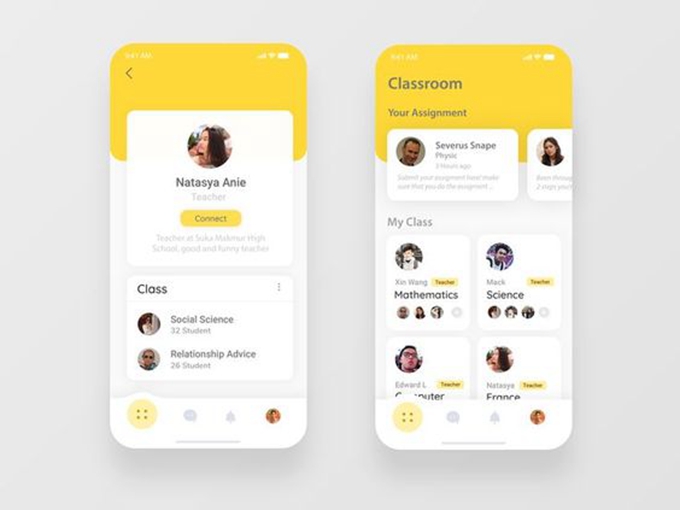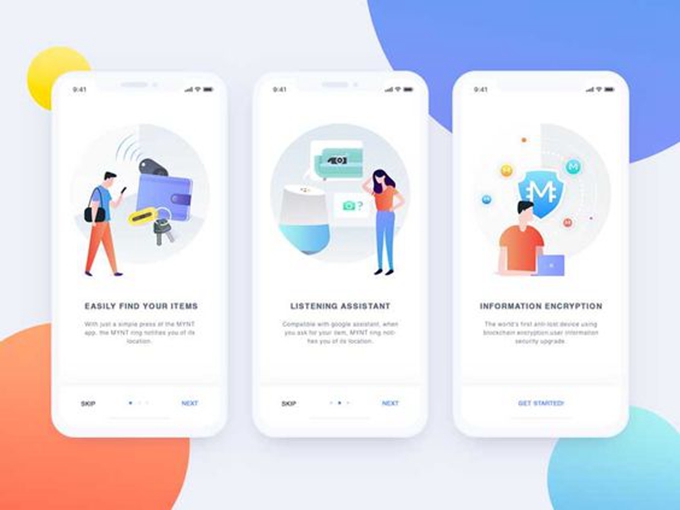In mid-October of 2021, individuals throughout Twitter went in on the “crimson flag” meme. You may keep in mind a lot of tweets with messages like “likes pineapple on pizza” adopted by numerous crimson flag emoji.
Table of Contents
Appears innocent sufficient.
However, as advocate Sara Fisch factors out, for those who use a display reader, as an alternative of seeing “likes pineapple on pizza” and a bunch of emoji, you’ll hear “likes pineapple on pizza” and:
And it isn’t simply the crimson flags. Many standard Twitter meme codecs can fall flat for display reader customers. If you wish to make your net content material accessible, you may have to tweak your memes. Listed here are just a few ideas.
Single picture with out textual content
Sure, the preferred meme format: a single picture with none textual content within the tweet itself. Since most memes have textual content on them, many of us do not hassle so as to add textual content to the tweet. However for those who put up them as is, individuals with display readers will not have something to listen to from you.
Here is a meme from Healthful Memes that does not get its level throughout on display readers:
What does this tweet sound like on a display reader? Nothing. Actually… nothing. The picture does not have alt textual content, so display readers haven’t any info to share.
It is nice to put up a picture on Twitter with out textual content within the tweet, however when it does not have alt textual content, display reader customers miss out in your content material. You’ll be able to assist everybody take pleasure in your cute capybara memes by including descriptive alt textual content to each picture you put up. And Twitter makes it straightforward so as to add alt textual content to pictures—you simply need to know the place to look.
Learn how to add alt textual content on Twitter
After you add the picture to your tweet, click on the Edit button in your picture:
Then, click on the ALT tab within the window that pops up. Write your alt textual content within the textual content field on the backside of the window that reads Description.
Click on Save, and also you’re good to go!
Whenever you write alt textual content, make it as descriptive as potential. You do not have to write down a novel, however attempt to seize a very powerful particulars. ACES: The Society for Enhancing has loads of good ideas for writing efficient alt textual content.
GIPHY and Tenor GIFs
Twitter has a nifty GIF search function that allows you to add a GIPHY or Tenor GIF to your tweets. Of us have a tendency to make use of these GIFs to answer to different individuals or specific their all the time insightful ideas on a subject.
GIFs mechanically populate Twitter’s alt textual content with their unique platform’s description. In idea, that is useful, however there are a pair points.
- The unique alt textual content is not all the time very descriptive. For instance, Arby’s posted this GIF in response to UNO:
Based on a Chrome extension that reads alt textual content, the image reads as “Sensible Pondering GIF.”
Okay, it will get the purpose throughout, however an individual who makes use of a display reader does not actually have the identical expertise. For all they know, the image could possibly be a faucet dancing mind with the phrase “Sensible Pondering!” in Comedian Sans. (I sincerely hope that exists.)
Higher alt textual content could be one thing like “A person faucets a finger to his head to indicate that he has a good suggestion.” Or, for those who’re a meme pedantic like me, you’d ensure that so as to add a reference to the Roll Protected meme.
- Within the worst-case situation, a GIF search GIF can have flat-out dangerous textual content. Twitter person T.C. Aurelius identified that a few of them prepopulate with discriminatory and harmful conspiracy theories.
You’ll be able to keep away from each of those conditions by including your personal alt textual content to your GIF search GIFs. The GIF alt textual content function seems in a distinct place from the common picture alt textual content possibility. You will discover an Add description hyperlink straight below your GIF after you add it to your tweet.
Whenever you click on that hyperlink, you may get a immediate to write down your alt textual content.
Crimson flags (and different emoji spam)
Again to the meme that impressed this weblog put up: the crimson flag meme. Should you missed it, try this instance from Chipotle:
On display readers that learn emoji, this tweet seems like “No guac for me,” then “triangular flag on put up” repeated fifteen occasions. Not tremendous nice.
Oh, and the emoji title does not even have the flag shade in it, so it additionally eliminates the whole level of the meme for individuals with display readers. It’s going to turn into tempting to move on the guac and the flags if an organization’s tweet sounds that obnoxious.
Accessibility advocate Steve Saylor, who makes use of a display reader himself, has a easy resolution for this meme: stick to 1 to 3 emoji.
You will discover extra concepts for alternate options within the replies to Saylor’s tweet. One reply instructed creating an picture of a number of crimson flags. One other makes use of a GIF of somebody waving a crimson flag. Each pictures have alt textual content, in fact.
The crimson flag emoji meme appears to have calmed down. However extra emoji memes will seemingly pop up sooner or later, so hold the following tips in thoughts.
The handshake (and different aligned textual content memes)
Twitter’s handshake meme first appeared just a few years in the past, however you may nonetheless see it make the rounds every now and then. The meme lists two ideas with a handshake emoji between them and one thing they’ve in widespread. Consider it as two concepts shaking arms over their widespread floor.
In lots of circumstances, this meme works nice on display readers. However a few of them have longer descriptions that do not match on one line, and in these circumstances, the tweet writer will area out their traces so every idea seems on the left and proper, like on this tweet:
It is presupposed to learn:
“Put up-World Conflict I writers & artists (handshake) me in fourth grade
pondering your whole issues would go away for those who lived in paris”
On a display reader, although, it reads as:
“Put up-World Conflict I me in fourth writers & artists grade (handshake) pondering all of your issues would go away for those who lived in paris”
Now it seems like a 100-year-old Twitter person speaking about artwork college at finest—and phrase soup at worst.
Display readers learn left to proper, in order that they relay the phrases within the order they had been really written. The meme may look nice to individuals who do not use display readers, nevertheless it seems like nonsense to those that do.
Resulting from Twitter’s formatting, it may be difficult to discover a center floor for this meme. If you wish to make it display reader-friendly, attempt a format like:
“Idea 1 (handshake) Idea 2
Commonality”
Or:
“Idea 1 (handshake)
Idea 2
Commonality”
You may have to mess around together with your line breaks to discover a clear structure. No matter you resolve, ensure that it reads accurately from proper to left. Or, if the formatting bothers you, dare I recommend you skip this meme format fully?
Comparable guidelines rely for different memes that attempt to align textual content left and proper, like those who evaluate two pictures side-by-side. All the time take into consideration how your formatting will sound whenever you run it by means of a display reader.
Particular Unicode textual content
Have you ever ever seen somebody use daring, italic, or script textual content on Twitter? That is not Twitter formatting—it is Unicode characters not utilized in typical textual content. In different phrases, they rely as fully completely different letters from those you kind together with your keyboard.
Since your pc thinks of those letters as particular characters, they do not learn as textual content on display readers. In actual fact, they do not present up in any respect.
Accessibility advocate Adrian Roselli demonstrates this challenge in a tweet:
Individuals who do not use display readers learn “Please don’t eat the shrimp scampi within the fridge. It’s tasty however will kill you.” However “don’t” and “however will kill you” are written in particular Unicode characters. That implies that display reader customers hear “Please eat the shrimp scampi within the fridge. It’s tasty.”
You in all probability will not need to tweet something that would food-poison somebody, nevertheless it’s nonetheless necessary to keep away from particular Unicode characters so display readers can learn your content material. Hold them out of your Twitter deal with, too.
Should you really really feel that fancy textual content will give your tweet some oomph, attempt screenshotting it and including alt textual content. Everybody wins.
A couple of last ideas
Undecided in case your subsequent tweet will sound okay on a display reader? When doubtful, obtain a display reader app and run it in your tweet earlier than you put up it. I used the Pericles Chrome extension for this put up.
Should you crosspost your content material from one other platform to Twitter, ensure you comply with the ideas lined right here. Content material that works on one other platform won’t translate properly on Twitter.
Your followers who use display readers will admire you!



